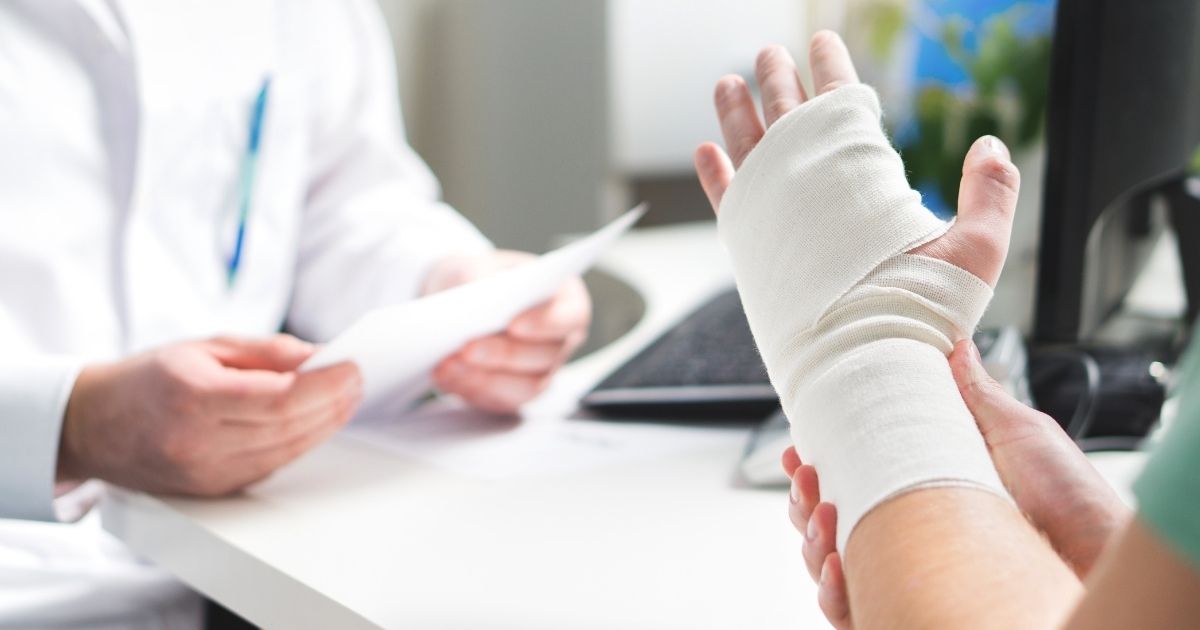The United States Bureau of Labor Statistics (BLS) reports that more than one million workers go to the emergency room with hand injuries every year. Work injuries involving the hand are both painful and debilitating for workers, and costly for their employers.
How an injury impacts a person’s mobility and overall quality of life depends in part on its severity. Many workers are unable to return to work or go about their daily tasks because of a severe hand condition.
For those workers, there is financial relief in the form of workers’ compensation. Although workers’ compensation benefits are critical for workers temporarily or permanently disabled, the greater hope is these injuries can be avoided altogether.
This discussion focuses on common hand injuries and what can be done to prevent them.
Common Workplace Hand Injuries
Amputations. Although amputations are less common than other hand injuries on the list, they are among the most serious in nature. Amputations involve the loss of all or part of the hand that happens when it gets caught in machinery or crushed beneath heavy objects.
Mental and physical recovery after an amputation is long and tedious. Some individuals experience long-term phantom pain and other discomfort at the site of injury.
Bone fractures. Blunt trauma to the hand from contact with a heavy object or a fall can fracture or break the delicate bones of the hand. Treatment and prognosis for a broken hand bone depend on where the break occurred, how much force was involved, and how the surrounding tissue was affected.
With some fractures, the bones crack slightly yet still remain aligned. In other cases, the bones shatter into pieces or poke through the skin.
Avulsions happen when a break occurs near where the bone attaches to a ligament or tendon. As the ligament or tendon pulls away, it brings a small piece of bone with it. Treatment for an avulsion generally involves ice, rest, stabilization, and physical therapy.
Burns. In a research study of data collected from the Trauma Registry of the American College of Surgeons, 15 percent of burn injuries over a two-year period happened at work.
Three types of burns are most commonly job related:
- Chemical: Caused by contact with ammonia, acids, and a host of other corrosive substances
- Electrical: Caused by contact with electricity that can cause internal tissue damage beyond the external skin injury
- Thermal: Caused by contact with a hot source or during exposure to a chemical reaction that releases heat
Burns are classified in severity by degrees. First-degree burns affect only the outermost layer of the skin and do not result in permanent damage. Third-degree burns reach further under the skin and can result in permanent nerve and/or tissue damage.
Crushes. When the hand is trapped in a door or in machinery, or if a heavy object drops on the hand, it can be crushed completely. A crush injury to the hand can damage all of the important structures within, including bone, blood vessels, nerves, and ligaments.
Surgery is often necessary to repair these structures. Yet even after treatment, the injured person may never fully recover normal mobility in the hand.
Lacerations. Scratches or cuts on skin’s surface can happen in any type of job. Those that do not go deep heal relatively quickly and without long-term damage. Deeper lacerations caused by knives and other sharp instruments are more likely to sever nerves and tendons. Extensive tendon injuries nearly always require surgery and rehabilitation to regain range of motion.
Puncture wounds. Puncture wounds happen when any sort of object pierces the skin. They are dangerous because they usually go deeply into the skin, inviting dangerous infections into the body. Construction workers, assembly line workers, even restaurant staff are at risk of puncture wounds.
Workers who have not had a tetanus shot in the previous five years may need to get a booster after a puncture to the hand or any part of the body.
Skin irritation. Another group of common occupational hand injuries include rashes, blisters, and other types of skin irritation. Contact dermatitis is an itchy, red rash resulting from direct contact with a substance, anything from soaps and cleaners to plants and metals.
Although skin irritation is not as dangerous of some the other conditions mentioned, it is extremely uncomfortable and can make work and other activities challenging.
Sprains and strains. Sprains and strains are caused by a single overuse injury or after repeating the same physical motion for prolonged periods. A sprain is the overstretching or tearing of the ligament that supports a joint. A strain is the overstretching or tearing of a tendon or muscle.
Symptoms of a strain or sprain include pain, bruising, and swelling. Some tears resolve themselves over time with rest, whereas more extensive hand injuries require surgery and rehabilitation.
Tips to Reduce the Risk of a Hand Injury at Work
A serious hand injury not only affects a person’s ability to do their job. Also, it can make doing everyday tasks such as getting dressed or preparing food quite difficult. As with other occupational injuries and illnesses, prevention is the key to reducing job-related hand injuries.
Avoid safety short cuts. Many times, workers know how to avoid common hand injury hazards, but in an effort to get more done quickly, they may take safety risks. Whether it is not inspecting heavy equipment as scheduled, or not stopping to put on the right safety gear, a short cut can cost more in the end.
Wear hand protection. Proper personal protective equipment (PPE) is the first line of defense against puncture wounds, lacerations, and burns. Employers should provide the industry standard in gloves and other PPE. Gloves should be weatherproof, heat resistant, or non-conductive based on the work being done.
Avoid repetitive motions. Carpal tunnel syndrome and other repetitive motion injuries are often the most difficult from which to recover. To prevent these injuries, workers should take regular rest breaks and alternate tasks throughout the day. Special gloves also help to reduce hand pressure and pain from frequent use.
Guard equipment. Another important way to reduce painful hand injuries on the job is to secure hazardous equipment. That means installing guards to keep hands out of dangerous areas and enforcing lockout-tagout procedures to ensure machinery will not start up accidently during maintenance or repairs.
Undergo safety training. Every employer has a duty to provide safety training for their staff. A comprehensive safety campaign teaches employees to recognize common hazards, take precautions to prevent accidents, and know what to do should an emergency happen.
Speak out about safety concerns. A safety initiative is only as strong as the people who utilize it. Individuals should never be afraid to speak out with safety concerns. Lapses should be reported immediately and corrected in a timely manner. Retaliation against those who speak out against safety lapses is unlawful in the United States.
What Should I Do if My Hand Was Injured on the Job?
After a sudden injury, the injured employee should notify management as soon as possible. Some conditions such as repetitive use injuries are not immediately obvious but worsen over time. As soon as an employee develops symptoms, they should notify their workplace. This is the first step in the workers’ compensation process.
A doctor visit is the next step. Some employers and their insurance carriers require employees to see approved doctors. Others do not restrict health care providers. Employees should always check with their employer’s workers’ compensation representative to make sure a provider is approved.
The employer and/or their workers’ compensation carrier can agree or deny the hand injury is work related. If they agree, the employee receives benefits for a period until they can resume working. If their claim is denied, they can appeal with the New Jersey Division of Workers’ Compensation.
After filing an appeal, a hearing is scheduled with a workers’ compensation judge. This is like a traditional court hearing. The injured employee can bring evidence to support their claim that an injury happened on or because of their job, and that injury prevents them from working temporarily or indefinitely. At the conclusion of the hearing, the judge makes a decision.
To ensure a claim for workers’ compensation benefits is accurate, complete, and on time, it makes sense to contact a lawyer for assistance. An lawyer can also assist with the appeals process to put forth the best possible case for a good outcome.
Cherry Hill Workers’ Compensation Lawyers at Pietras Saracino Smith & Meeks, LLP Fight for the Rights of Injured Workers
Every day in the United States, people in all types of work get hurt on the job. Fortunately, the workers’ compensation system exists to support these valuable employees while they are unable to work. The Cherry Hill workers’ compensation lawyers at Pietras Saracino Smith & Meeks, LLP believe in your right to fair compensation for a work injury. From your first consultation until your case is resolved, and after, we are here to advocate for you. Call us today at 856-761-3773 or contact us online to schedule a free consultation. Located in Cherry Hill, New Jersey, we serve clients in Camden, Cinnaminson, Delran, Maple Shade, Pennsauken, and throughout South Jersey.













